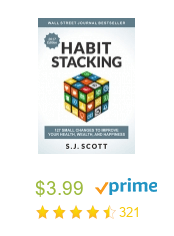
8 Things To Know About Construction Loan And Mortgages

Construction Loan Versus Mortgages
Are you planning to build a new house or to begin a huge renovation project at home? In that case, you should get more helpful details about construction loans. Having some knowledge about construction loans can be very beneficial, especially if you are seriously considering undertaking a big renovation project at home or perhaps building a new house. Construction loans and mortgages have many similarities, but these two also have a few differences. If you want to ensure that your construction project goes on without a hitch, determine how a construction loan can be of help.

1Mortgages And Construction Loans
The idea of getting a construction loan or a home improvement loan is that you obtain money for the labor and materials required for a short-term construction project, and then you get a permanent mortgage after that is finished. In case you are building your house from scratch, and you want to follow a design that you've specified; you likely need both of these loans. After the expiration of a construction loan, the lender will begin collecting his money. This is what happens in a permanent mortgage. This type of mortgage is more or less similar to a typical mortgage, and you will come to understand this concept even more below.
So, how long are the processing and the term of a construction loan? Initially, a borrower must obtain specifications and plans. He must first get in touch with a reliable architect who will design his house.

2What Comes After The Initial Work
After important initial work is done, the borrower must start looking at several building sources so that he can get a quote and a time estimate, as regards to the construction work that is going to be done. When building a home or renovating, this is one of the steps that take up a lot of time and concentration. A lot of things may also change, like making alterations regarding the project, to reduce costs because a contractor had a bid that's too high.
However, the borrower may decide to expand his building plan to take advantage of the cash that he is likely to receive, especially if the bid is quite low. Another crucial consideration is the location. You must first determine where you want to build a house - have you purchased a lot already, or are you still searching for a good site?

3Consider Other Factors
One more vital consideration is the design of your home because it must comply with your region's or state's building code. Are you following the designated setback? Do you think the house that you've planned is too big for the available lot? These and other factors are issues that you probably cannot handle alone. This is when you will require the assistance of a licensed architect and a reliable builder - both of them can help in creating your dream house that fits your needs.
There are many developers out there, who often design and style certain structures to match the size and topography of the available lot/land. You can also choose what decorations or accessories to use, like carpeting, tiles, wallpaper, and others. In general, your options will be somewhat limited if you do decide to renovate or rebuild rather than if you do decide to build a new house from scratch.

4Hire A Reliable Builder
Opt for a builder who can show you a variety of designs, including contemporary styles; such is one hallmark of an excellent and effective builder. Also, don't forget that building a new house will take some time. You must ensure that you already have a lot so that work can start as soon as possible.
In addition to this, you must see to it that you are complying with the building codes and regulations in your area. Get the required utilities and make sure that your house is not being built on land that is home to endangered wildlife. You will avoid these issues if you purchase your new home from a builder, as you will be getting the house and the land/lot instead of just the lot.

5Similarities Of Loans
A construction loan is not that different from a typical mortgage loan. Similar to applying for a mortgage, you must also possess a good or fair credit score, and you must meet the requirements as well. The main difference is: you cannot get a construction loan unless you present a commitment letter from your lender.
A commitment letter ensures that the construction loan will be paid with the mortgage loan, as soon as the work is done. As you can see, construction loans are short-term loans. Mortgages, on the other hand, is mainly used to aid people who wish to build or renovate their homes.

6Interest During The Construction Period
During construction, expect to pay interest. However, it could be waived by other construction lenders who may opt to receive the payments for the construction loan and its interest via mortgage payments. In general, construction costs are classified as either "hard" or "soft."
Hard expenses pertain to physical requirements for building a structure, such as a hammer, nails, land, labor, and wood. Soft expenses cover the needed requirements for building, like permits, tax, and title work. Construction loans also have contingencies, as well as holdback (the sum of money held back until the job is nearing completion), which could be about 5% to 10%.

7The Change Order
In case you do change your mind, you could use a change order. The governing bodies will thoroughly examine any changes from the original plan, plus such could also affect the holdback fund. In case you are thinking about building a house, you must come up with a computation regarding how much your total spending will likely be until your new house is completed.
To illustrate, let's say that the lot will cost you around $50,000, plus you will need another $20,000 for the architect consultation, drawing a plan, and other necessary building permits. Then, there will be construction costs which will be your most significant expenditure. Allot around $200,000 for that alone and budget some money for other requirements as well. You will likely need $10,000 for closing costs, and your total expenditure is more or less $280,000.

8The Holdback Reserve
With a holdback, you'll have some extra money that will give you a little wiggle room. Then, there's also the hold back reserve, this is generally 10% of the total computed cost. Based on the example above, the sum is $28,000, and you must also set aside this amount. Now, your overall total becomes $308,000; this is the amount that you need to start building and to complete your new house.
Once you finish your estimate and your plan, it's time to submit this to your lender who will reevaluate everything, and may even hire an experienced appraiser who will verify the provided data, and give the lender an estimate of the overall value of your home once it is finished. An appraiser must check out other houses in the area that are similar to yours, and he must imagine what it will look like once it's finished and after it's been lived in. This is how an appraisal is conducted when it comes to unfinished houses. Moreover, the appraiser will keep tabs on how the construction is going, as he will also help the lender in deciding how much and when your builder will be paid.
Perhaps, you are now checking out construction loans so that you can build your new dream house. See to it that your proposed project follows all regulations and the building code of your state or area, and understand that you will need to continue paying interest while the project is ongoing. Hopefully, all the information that you find here will help you in selecting the best construction loan for your needs.
About Author
Jackie Wing
GET THE FREE MAGAZINE DELIVERED STRAIGHT TO YOU:









































